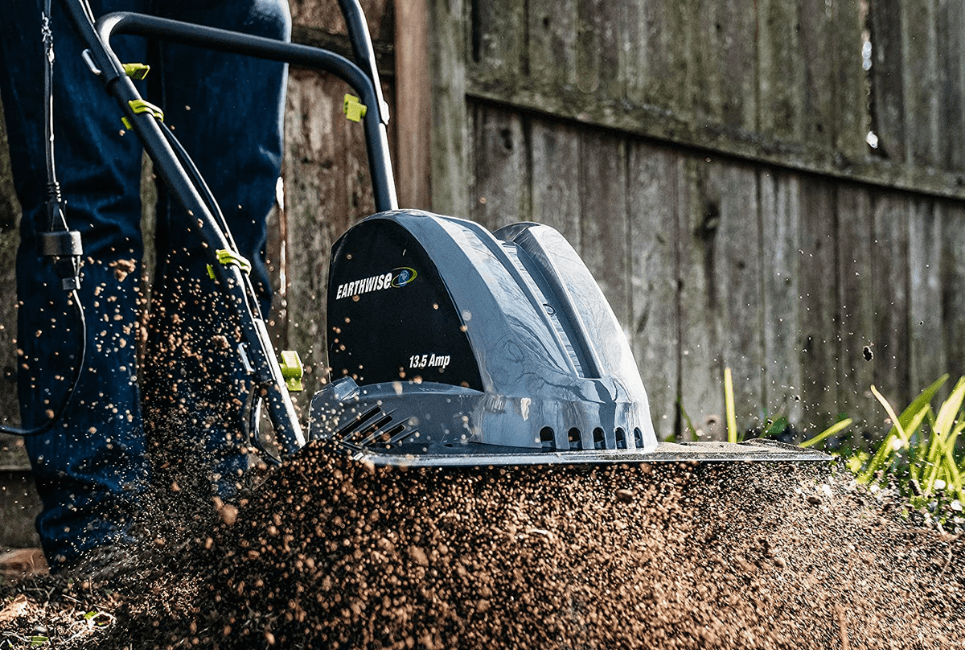- Best Stump Killer To Consider for Your Yard - January 5, 2024
- The 7 Best Spading Fork Options - December 21, 2023
- Best Head Planters – Top 24 Options You Will Love - December 16, 2023
There are a plethora of tools we can use in our gardens. If you are new to farming, the chances are high that you only know the basic ones such as a garden hoe, hand trowel, secateurs spade, shovel, and rake, among others.
Well, these tools can do the job correctly in a simple garden but might not be enough if you wish to take things a notch higher. Some of these tools have minimal differences that make them ideal for specific applications.
If you are not aware of the fine lines that draw the lines between these tools, it is easy to find yourself using them in the wrong applications.
In this piece, we will look at two commonly confused tools, the cultivator and tiller, and expound on what they are about to help you pick the right one for your next application.
Read on:
Overview: Cultivator vs Tiller
Cultivators and tillers have many similarities, and it is common to find people using these two terms interchangeably. They both have a structure that utilizes metal blades to dig into the ground. They are an improvement to the standard shovel or hoe that many people use to dig.
The upside of these tools is that they provide greater efficiency in that you only have to ride them across the turf, and they will do the job. They draw similarities to the lawnmower, which is an improvement to the slasher when cutting grass.
Do not assume that the comparison ends here since both tools are used for the same work, i.e., digging and stirring the soil. They have key differences, and we will outline them further below.
A cultivator is a tool with star-shaped wheels and thin blades mainly used for loosening soil around existing planting areas.
They are also used in weeding the area or mixing soil and compost. Note that this tool is employed when the soil is already loose and only helps accomplish the works that follow. They are compact and easy to use, and you will find various types mentioned below.
A tiller is a tool with a greater working width than a cultivator mainly used to break down hard soil. It is suitable for jobs that are too “heavy” for the cultivator and are more powerful, thanks to their large blades and heavy-duty tines.
Just as it is with cultivators, they come in different types ranging from rear tine tillers to ones with engine-driven wheels. Tillers are more flexible and can be used in various applications, depending on the style you settle on.
To put these two tools into perspective, try and picture what you will use if you have to start farming on virgin land that has never been used before. Here, you will need to get a tiller to break the big chunks of soil into finer particles before using a tiller to refine it.
Types of Cultivators
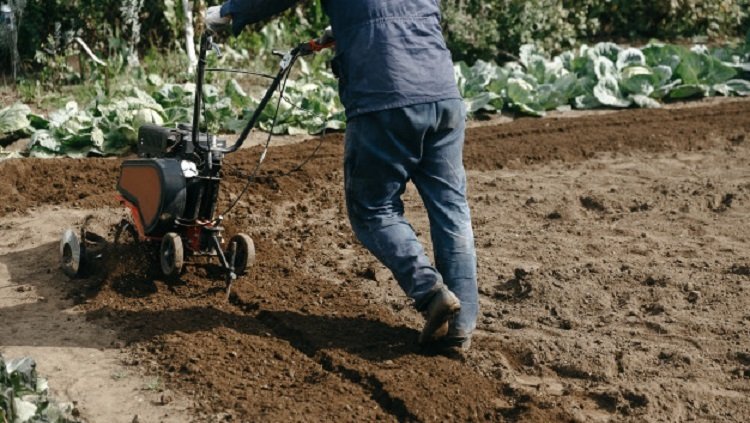
Spring Tine Cultivator
These cultivators have heavy springs and reversible shovels as the dominant feature of their times. The springs are in place to keep the tines from breaking whenever the tool comes into contact with a hard object, say concrete.
It is recommended for both dry and wet soils and does the most challenging jobs.
Rigid Tine Cultivator
This is the opposite of the spring tine cultivator, as the name implies. It has U clamps and shovels, features that make it suitable for most gardening tasks.
It does not have springs, and the tine will take the full impact when it comes into contact with the hard stuff. However, this rigidity makes it ideal for loosening soil and perfect for hard grounds.
Rigid Tine Shovel Type Cultivator
This is a standard version of the cultivator and used for most agricultural applications. It is suited to bigger fields and large-scale tasks. It can easily be used for loosening and aerating soil as well as weeding and cultivating.
Types of Tillers
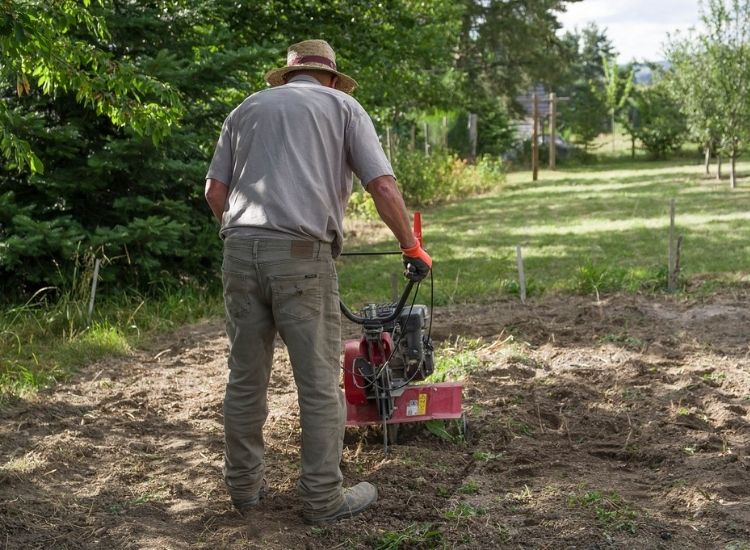
Front Tine Tiller
This tool has forward rotating tines in front of the machine with the engine sitting above or behind them to give them weight. The positioning of the wheels at the rear end makes it easy to move the machine from one point.
You need some muscle power when using the tiller to tip the tines into the soil, but the engine will help with this. When tilling, the front, rotating tines tend to pull the machine forward, and you have to hold it back to prevent it from “running away from you.”
In a giphy, this tiller is a less complicated and cheaper option for small and medium-sized gardens, thanks to how you can maneuver them around tight corners.
Mid Tine Tiller
These tillers are put in the same category as front-line tillers, but their design is different. Here, the tine is directly below the engine allowing for a more balanced operation.
However, they are still driven by the tine motion and even have the same downsides associated with this feature.
Rear Tine Tiller
As the name implies, this tiller has its tines located on the rear end of the machine. They are more sophisticated and tend to have larger engines, making them the most expensive ones in the market.
The wheels allow the machine to move at a set speed regardless of the tines’ action, which can be an advantage. The wheels can hold the machine in place to allow it to dig a certain depth, making it easy to control the digging and depth you require.
Some models will have features that let you control the machine using gears and add to their functionality. In a nutshell, this is the best tiller available and has features that make it the easiest to use.
Things to Consider When Choosing Between a Cultivator and Tiller
With the features of the two laid out here, your primary concern should be to get the right tool for your gardening needs. Here, we will break down the significant factors to consider when you hit your nearest gardening shop and need the right tool.
Size of Garden
One of the main things to look at is the size you need to prepare for gardening. Do you want a tool to prepare your small backyard?
Do you want a machine that can prepare your large parcel of land for the upcoming planting season? In other instances, you might be well served with a tool that gives you the best of both, i.e., one that you can use to plow your small garden and the parcel of land as well.
For small gardens, especially those that are less than 1,500 feet, you might be better off buying a cultivator. For larger parcels of land, you should buy a heavy-duty tiller.
Note that the tiller can still plow a small garden, but buying it for this purpose will be overkill. Besides, it does not have the precision required to navigate the tight corners associated with small spaces.
Application
This is perhaps the most important thing to consider when choosing between a cultivator and a tiller. Do you want to break up virgin soil composed of hard soil chunks, or you want to prepare your small backyard garden?
Heavy-duty tillers come with additional attachments such as wood chippers and wagons that are perfect for big projects and rugged applications. Medium-sized tillers can offer the best of both, and they are recommended for breaking up sandy and loamy soils for regular garden maintenance.
Cultivators, on the other hand, are used for everyday garden works and can be used for weeding or aerating the garden.
Weight and Flexibility
The other thing to consider is the shape and weight of the tool and the person who will be using it. This is because you need a tool that will be easy to use, and you won’t be required to hire someone to do the job for you all the time.
Most of the large tillers are heavy and cumbersome to turn and ensure that what you choose works for you. Note that there is a tradeoff between the weight of a tool and its capabilities, and you need to get this compromise right.
For instance, heavyweight tillers are harder to control but work well to break down hard soil. A smaller cultivator might be easier to maneuver but will struggle to break down the hard ground.
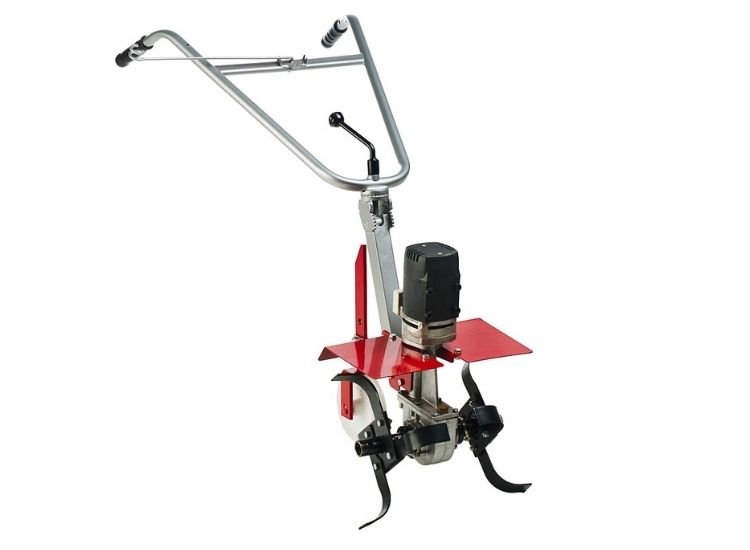
Design
Some of the different types of tillers and cultivators have been mentioned above. They have their characteristics which suit different situations. For instance, the engine’s position with respect to the wheels dictates a lot regarding how the tool works.
Go through the different types of tillers and cultivators and check out the recommendations on the best scenarios to use them before choosing a suitable one.
Source of Power
All tillers and cultivators use different sources of power, depending on the manufacturer’s specifications.
Those with two-cycle engines need a mixture of oil and gasoline, which can be hard to come by. Four cycle engines use unleaded fuel, which means that you won’t have to mix fuel.
Today, you will find several electric mini tillers and cultivators, and they only require you to plug them into a power source, and you are good to go.
However, these can be challenging to use when you need to work in distant areas from a power source. Besides, they are not as powerful as the ones that use fuel.
The Good and Bad
Pros of a Cultivator
- Their small-sized blades make them perfect for mixing soil
- Ideal for weeding between beds
- Easy to use
- Cheaper
Cons of a Cultivator
- Limited power
- Most of them require you to push them manually
- Not suitable for large gardens
Pros of a Tiller
- Powerful than a cultivator
- Easily breaks hard ground
- Perfect for working on large gardens
- Cleaner four-stroke engines
- Longer tines
Cons of a Tiller
- Bulky and harder to use
- They are costly
Frequently Asked Questions
Most people cannot differentiate between a cultivator and a tiller due to the subtle differences they have. You will find some people referring to a cultivator as a mini-tiller, which spells out the main differences between the two. These two machines play the same role, but what sets them apart is the size, power, and applications. Yes, all of them plow the ground, but the cultivator is a smaller version used for small and lightweight application. A tiller is a powerful, robust, and bigger machine that is suitable for heavy-duty jobs.
The terms cultivating and tilling are used interchangeably in various settings, and this is part of the reason people confuse tillers and cultivators. Tilling is preparing the soil to cultivate seeds by mixing, digging, and overturning the ground. It ensures that the soil is aerated and removes the roots of weeds that might have survived. Both cultivators and tillers are used for this.
There is very little difference between tilling and aerating except that the latter happens when the crops have started growing. This makes sure that the soil gets enough oxygen supply, and it helps uproot weed. Aeration should ideally take place when the soil does not have a lot of moisture.
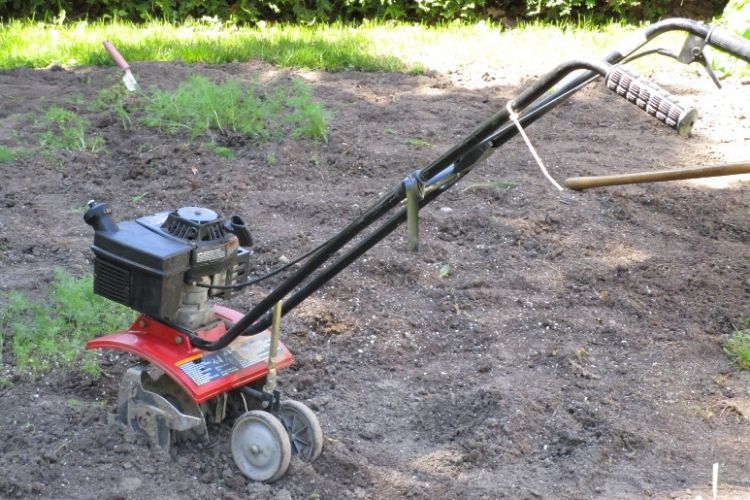
Bottomline
There is a fine line between a cultivator and a tiller, and you need to understand the differences to ensure that you land the right one. Some of their features have been listed above and situations where you should ideally use them.
Note that these machines are noteworthy investments that should serve you for a significant time: this way, you should get your decision right.
The rule of thumb is that you should buy a cultivator for light-duty tilling applications and a tiller for heavy-duty ones. None is superior over the other as they are all used for specific applications.

